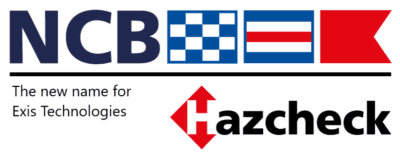Dangerous goods: improving safety at sea
Containers (Bureau International des Containers), No 2 2018
In April this year, Exis Technologies became the software division of the National Cargo Bureau (NCB), a New York-based not-for-profit organization entrusted with ensuring safety of life and cargo at sea. Exis Technologies and NCB have since been working on several new initiatives to help improve safety in the supply chain.
Overcoming complexity in shipping dangerous goods
Most significant ship fires are attributed to incorrectly declared dangerous goods (DG) cargoes, often exacerbated by criminal non-declaration or fraud. Around 10% of containerized shipments include dangerous goods, with some ships carrying more than 1000 DG containers on any given voyage. Shipping lines are therefore keen to ensure that DGs are properly classified, packaged, packed and declared throughout the supply chain.
Complex critical checks are carried out for all DGs to be shipped:
- Most lines restrict or prohibit certain classes of DG (particularly explosives, radioactive materials and some organic peroxides in reefer containers), so the booking line needs to know if the partner line will accept the DG.
- Detailed stowage requirements (such as on-deck only, away from accommodation, or away from sources of heat) imply limited suitable space.
- Many ports and individual container terminals have strict rules on the classes of DG that can be loaded, unloaded or trans-shipped, or even present on board while the ship is in port. The “wrong” DG aboard a ship can cause disruption.
Of course, the checks imply that the shipper has properly declared the cargo as DG in the first place. However, mistakes can be made due to lack of competence or, unfortunately in some cases, by deliberately incorrectly declaring cargo to save cost or time. In other cases, the cargo may have been properly declared, but mistakes are made with packing and stowing the cargo in the container.
Unless the container is physically opened and inspected, there is no way of knowing whether the cargo is safe for transport. The diagram below shows the current landscape regarding the shipment of DG by sea:

If the cargo is properly declared as dangerous goods, shipping lines can use tools such as Exis Technologies’ Hazcheck to verify that the declared cargo complies with the IMDG Code and other local rules and restrictions. More than 400,000 validations are made with Hazcheck per month for the top 10 lines representing 70% of the world’s DG container traffic. Around 4,000 rejections are picked up each month with the software for declared dangerous goods.
Hazcheck Restrictions Portal: simplifying DG restrictions
Exis Technologies launched the Hazcheck Restrictions Portal to reduce incidents at sea, primarily by ironing out confusion in the complex operational processes involved in navigating today’s supply chains with dangerous goods. Each carrier has been collating its own record of restrictions in relation to house policies, ship-owner policies, ship constraints (e.g number of available reefer points), and restrictions applied at the applicable ports or terminals of loading, transit, trans-shipment and discharge. Exis Technologies is cooperating with two of the leading industry insurance organizations, and has been working with container operators, ports and terminals to build a shared database of local and operator restrictions. To date there has been no single source of data.
Exis Technologies is encouraging ports and terminals to upload their data free of charge over the next two years so it can be accessed by all parties, including shippers and forwarders. The flow of data into the Hazcheck Restrictions Portal can be seen in the diagram below:

Detecting problems with dangerous goods cargo before shipment
A final option is to physically inspect selected bookings and containers before they are loaded to verify that cargo is declared, packed and stowed correctly. Over the last 10 years, less than 80,000 containers have been inspected by the reporting Competent Authorities per year, with ‘deficiencies found in about 10%of cases on average” (source TT Club with four countries reported). The National Cargo Bureau, for example, recorded a 9%failure rate out of around 31,000 inspections in the last reported 12 months. Most of these inspections are of declared DG. Reasons for rejection include leaks, documentation, segregation, placarding/marking (the most common problem followed by packing/stowage issues). With more than 10 million DG containers shipped per year (broad estimate), a failure rate of 9% is significant.
Hazcheck: how it works
Exis Technologies have been working with the National Cargo Bureau (USA) and Port Supervisor (Rotterdam) to develop a new container-cargo inspection system in line with customer requirements. Earlier this year Exis announced the launch of Hazcheck Inspections, a web-based database and access portal for inspection companies to plan and enter details of cargo inspections completed on behalf of container or vessel operators.
The solution allows the container or vessel operator to log in with secure access and view or download inspection results and/or analytics. Consistent data is recorded and reported regardless of where and who records the inspection result. Non-confidential analytics data can be shared with partners and third parties to help influence policy concerning shipment of DG by sea. Operators can send cargo details to the inspection company and pre-entered planned data can be re-used when the inspections details are recorded. The benefits include a common database, consistent reporting and data analysis. Operators have the option to share non-confidential data with partners and third parties, e.g. CINS (Cargo Incident Notification System).
Major players already on board
In August this year, NCB began inspecting containers carrying imports to the USA for CINS members to determine the extent of improperly declared or stowed cargo. Five hundred containers will be inspected in total and the findings will help identify trends. “The goal is to look at containers originating from countries where there are not a lot of container inspections”, said NCB president Ian Lennard. “It’s a way for the industry to figure out what we don’t know and hopefully it will lead to some knowledge and better ways of doing things.”
Port Supervisor also provided important input on pre-planning inspections before loading cargo. About 4,000 outbound containers (about 15%of the outbound containers shipping hazardous materials) were inspected last year, and about 10% of those containers were improperly placarded or labelled. Around 23%were rejected because of problems with lashing or securing cargo.
With two major companies on board, the database has had a kickstart, but the next challenge is to encourage other companies to help build up a database of activity and DG declaration issues on a global scale.









